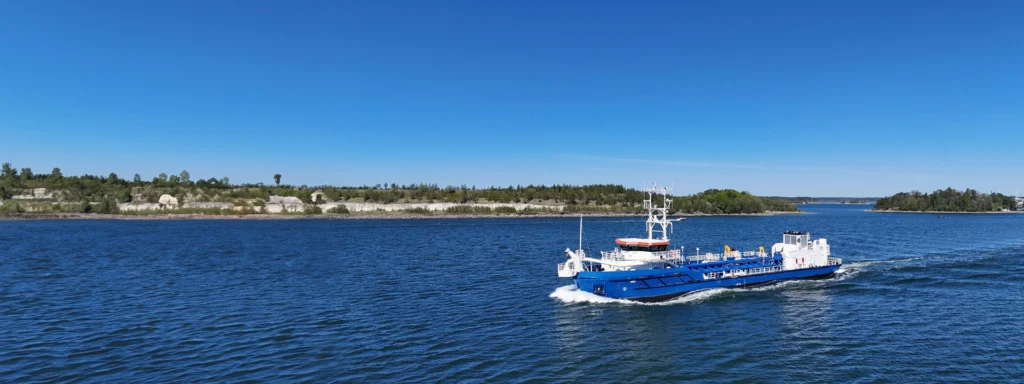
Performance for the heaviest loads and sea conditions
Operated by Société de Transport Fluvio-Maritime de l’Ouest (STFMO), a sand and gravel transportation company based in Bretagne, the St. Pierre primarily dredges in the Atlantic Ocean and the storm-prone Gulf of Biscay. The design therefore had to account for rough weather conditions and ensure stability and safety during both sailing and dredging operations.
One of the most remarkable aspects of the St. Pierre design is its high deadweight-to-hopper volume ratio. This design feature is essential for carrying large volumes of heavy sand and gravel loads over long distances without sacrificing efficiency and performance.
To achieve this, the vessel is designed to be slender, which reduces hydrodynamic resistance during transit, and lowers fuel consumption. Meticulous engineering and attention to detail throughout the project was necessary to meet the strict steel weight limits set by STX Lorient to achieve the dredge’s sailing speed and dredging performance goals.
The dredge is equipped with a sophisticated drag arm system, featuring an underwater pump that enables efficient dredging from significant depths. C-Job was also responsible for the 3D detail engineering of both the hull and piping systems. This ensured a high level of precision, reducing potential issues during the construction phase and streamlining the build process.
This project exemplifies a well-executed collaboration between the shipyard, designers, and Holland MT, a specialist in dredging equipment, resulting in a vessel that is perfectly suited for its intended operations.
St. Pierre – for STX Lorient
Project highlights
Optimized for deep-sea operations
A state-of-the-art dredger for offshore sand and gravel extraction
Design fusion
Innovative concept, advanced engineering, and practical functionality
Equipment integration
Seamless integration of dredging equipment into the vessel structure
Optimized performance
Relatively lightweight, with an optimized hull shape for low fuel consumption
St. Pierre – for STX Lorient
Related case studies

A new CSD 30″ – for the Port of Portland


